Professionals come to SMDigital Partners applying to full time positions or internships, aiming to assist the lead generation or media team. Initially overwhelmed by terms like CPC, CPA, impressions, and conversions related to paid advertising, some can feel daunted by the prospect of comprehending these acronyms and delving into the world of PPC. However, as they embarked on this journey of learning PPC, many discovered that their initial skepticism was unfounded. Through the guidance of knowledgeable mentors and hands-on experience, team members successfully developed multiple campaigns within Google Ads and gained proficiency in tracking and optimizing their performance. They realized that the process of creating and managing Google Ads campaigns was far less daunting than they initially anticipated. Reflecting on their experience, we gathered some surprising lessons they learned throughout their journey of creating their first Google Ads campaign. We’ll share them with you.
1. It’s tricky to find the right keywords (Juliana)
The initial stage of campaign building involves selecting the appropriate keywords to trigger ads. Initially, I assumed this task would be straightforward. To begin my research, I focused on finding relevant keywords and utilized tools such as the Google Ads Keyword Planner.
As I sifted through the extensive list of suggestions, I specifically sought out words that aligned with my offering. Initially, I gathered around 40 potential keywords, believing I had accomplished my goal. However, I soon realized my mistake. While these keywords were highly relevant, they either generated minimal traffic or came with exorbitant costs that made them financially impractical.
This experience taught me that keyword research encompasses more than just finding relevant terms. While relevance remains crucial, it is vital to consider other factors. The ideal keyword strikes a balance by being relevant, having low competition, and generating a significant number of impressions.
Although not all keywords will perfectly align with this criteria, it serves as a starting point when organizing the numerous suggestions provided by these tools.
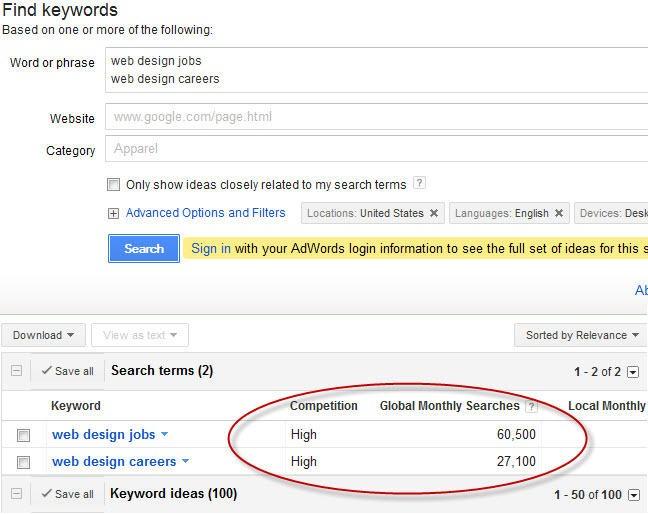
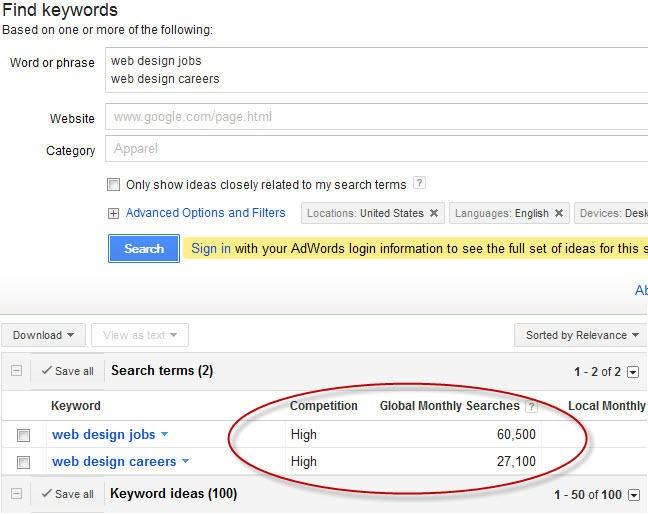
Tip: When doing keyword research, look for relevant and effective keywords.
2. You need way more keywords than you think you do (Daniel)
Upon carefully selecting my relevant and effective keywords, I finalized a list of approximately eight to include in my campaign. Satisfied with my choices, I believed I had followed best practices, which recommend having between eight and 10 keywords per ad group.
I was wrong.
It is commonly advised to have around 10 high-performing keywords in a strong ad group. However, during the initial stages of building your campaign, it’s difficult to determine which keywords will perform the best. To tackle this challenge, it’s recommended to start with a larger pool of keywords. By testing a wide range of keywords, you increase your chances of finding highly relevant and effective ones for your ad groups. As time progresses, you can evaluate the performance of each keyword, pausing those that generate a high cost-per-acquisition (CPA), low impressions, and low conversions. This iterative process allows you to refine your keyword selection, optimizing your campaign while staying within your budget.
Tip: Test plenty of keywords to find your best performing ones.
3. The headlines are the hardest part (Maria Jose)
At this stage, you have a collection of relevant and effective keywords to test, but now it’s time to tackle another challenge: writing the ads. Initially, you might have assumed that the character limits in Google Ads would make the task easier, but you quickly realize that’s not the case.
To simplify the process of writing ad copy, I discovered that starting with the description, which allows up to 90 characters, can be helpful. This provides more space to position your product or service effectively, and then you can build the headline around it. To brainstorm possibilities, it’s effective to begin the description with a verb.
I also learned that framing the headlines as a conversation can make writing them easier. Use Headline 1 to propose a question that your audience may be asking, and then provide the solution in Headline 2, emphasizing how it relates to your product or service. For instance, an example could be: “Need a PPC Expert? Add SMDigital to Your Team.” To identify the questions your prospects may be asking, consider completing the sentence “I want to …” from their perspective.
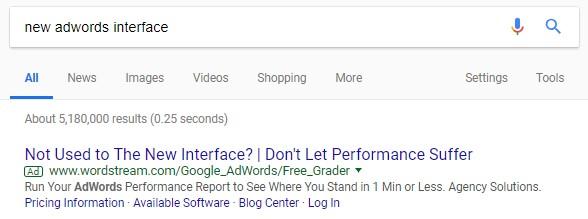
Tip: Start with the description and have a conversation with your prospect.
4. Writing ad copy is a kind of puzzle (Santiago)
Initially, I believed that writing ads would be a straightforward task, as mentioned earlier. However, when I actually started writing my ads, I realized that it wasn’t just the ad copy that posed a challenge—it was also organizing all the information I wanted to convey. Writing effective ad copy involves considering numerous factors, and finding the right balance among them can often feel like solving a puzzle, with each piece needing to fit together seamlessly.
Here are some key insights I discovered during my journey:
- Incorporate your keyword into the ad copy: It’s essential to include your targeted keyword in the ad, whether it’s in the headlines, description, or display URL. If your keyword is a phrase, ensure that each word is present somewhere in the ad, even if they are not adjacent.
- Address your customer’s needs: Each ad should directly address what your customers are looking for. If you have different ad groups targeting distinct audiences, customize the ad copy to highlight the features or benefits that are most relevant to that particular audience.
For instance, when searching for women’s running shoes, customers are specifically seeking stores that offer women’s footwear. Including this specific value in your ad copy, as demonstrated by Nordstrom Rack and DICK’S Sporting Goods in the example below, ensures that you deliver what your customers are looking for:
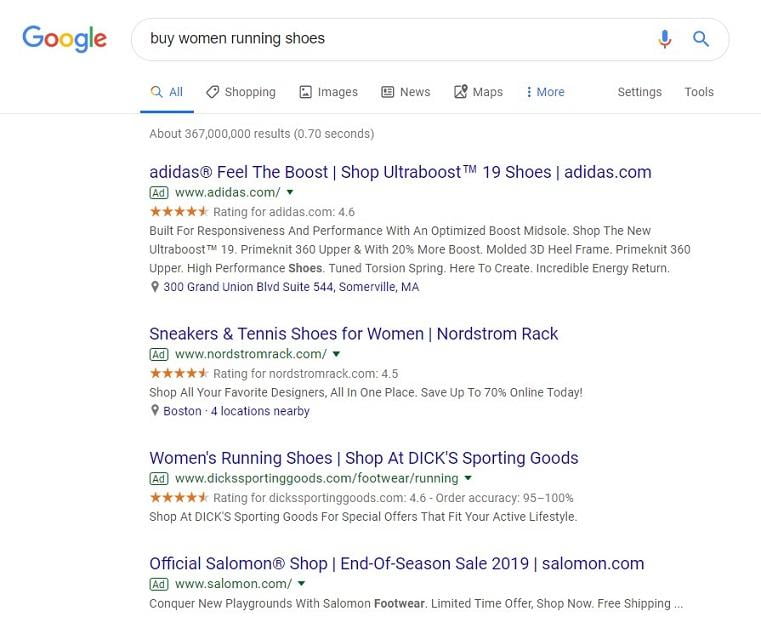
Customize your ads to align with the specific needs and preferences of each ad group’s target customers.
Tip: Make sure your ad copy includes each piece of the puzzle, especially keyword and intent.
5. There is no perfect match type (David)
Now comes the moment to incorporate your efforts into Google Ads. Exciting, right? But hold on, which match type should you choose?
I was concerned that using broad match would exhaust a significant portion of my budget on users who might not be interested in my product. However, phrase or exact match seemed too limiting and might not reach enough potential customers. Determining the right level of reach felt like a challenge.
After careful consideration, I concluded that there isn’t a definitive answer to this question. Like many aspects of running a Google campaign, it’s a matter of testing and experimenting to find the optimal match type.
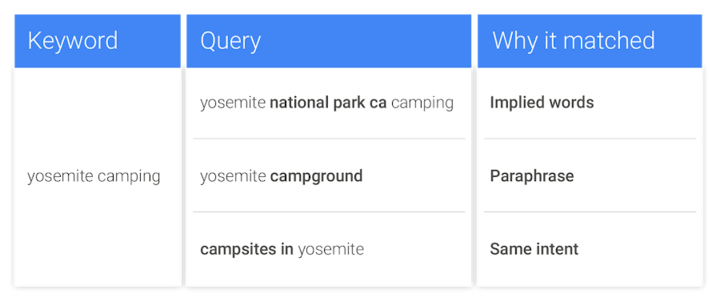
Similar to the idea of finding the best keywords by starting with a large pool, testing different match types is crucial to determine the most effective one for your campaign. It’s important to experiment with various match types and assess their performance to identify the optimal choice for your specific campaign.
Tip: Test your match types!
6. You have to take proactive cost-saving measures (Ana)
Accessing the Search Terms Report proved to be a valuable tool in optimizing my campaign. By navigating to the “Keywords” section within my campaign and selecting “Search Terms,” I gained insights into the actual search terms that triggered my ads. This report allowed me to identify irrelevant or low-performing keywords and add them as negative keywords to refine my targeting. Additionally, it helped me uncover new keyword opportunities that I hadn’t initially considered. With the ability to fine-tune my campaign based on the data from the Search Terms Report, I was able to make necessary adjustments and improve the overall performance of my ads.
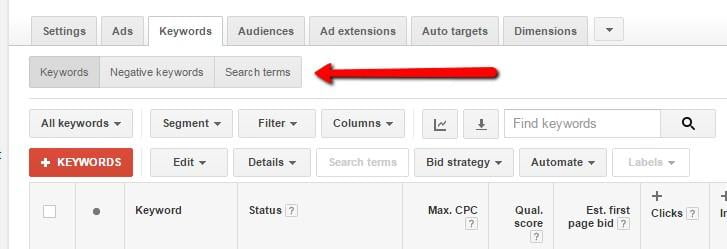
Don’t worry if the Search Terms Report seems overwhelming initially—it’s actually quite straightforward to organize and extract relevant data from the thousands of search queries. When analyzing the report, pay attention to metrics such as cost per conversion, impressions, and average cost per click. By focusing on these key indicators, you can take the following steps to optimize your campaign and achieve better results:
- Identify irrelevant search queries with high total costs and add them to your negative keyword list. This will prevent your ads from showing for irrelevant searches, saving you money.
- If you notice a specific search query generating a high cost per click, review your ad copy and landing pages to ensure they align with the user’s intent. Updating and optimizing these elements can help improve the relevance of your ads and potentially lower costs.
- Take note of common search terms that are driving significant volume and consider adding them as keywords in your campaign. This allows you to target these high-performing queries directly and potentially attract more relevant traffic.
By leveraging the insights from the Search Terms Report, you can continuously refine and expand your campaign based on your audience’s actual search behavior. This iterative approach helps you save money by avoiding irrelevant clicks and optimize your campaign to deliver better results.
Tip: Use the Search Term Report and other tools to help you improve and expand your account.
7. Wow, I actually did this right? (All Of Us)
As you may have picked up on, we felt very overwhelmed when we started creating our first Google Ads campaign. Each step felt more difficult than the next, and we were positive we were making mistakes. But when we started to see our ads lifting conversion rates, these apprehensions disappeared. We were excited to update our account and, dare we say, start the process over again to create new campaigns.
Once you get the hang of it, it’s exciting to see what other strategies you can try to help your Google ads perform the best they can.
So we leave you with one final tip: You can do it!
